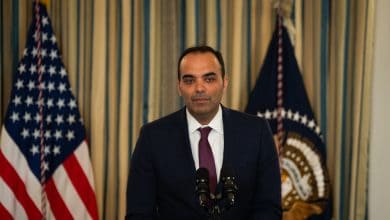For Disney, Streaming Losses and TV’s Decline Are a One-Two Punch

Robert A. Iger’s urgent need to overhaul Disney — to turn its streaming division into a profitable enterprise and pull back on its troubled traditional television business — came into sharp relief on Wednesday.
Disney’s streaming operation lost $512 million in the most-recent quarter, the company said, bringing total streaming losses since 2019, when Disney+ was introduced, to more than $11 billion. Disney+ lost roughly 11.7 million subscribers worldwide in the three months that ended July 1, for a new total of 146.1 million.
All the decline came from a low-priced version of Disney+ in India. (Last year, Disney lost a bid to renew the expensive rights to Indian Premier League cricket matches.) Excluding India, Disney+ gained 800,000 subscribers, primarily overseas.
To make streaming profitable, Mr. Iger, Disney’s chief executive, has shifted the focus at Disney+ away from brisk subscriber growth, which requires expensive marketing campaigns. Instead, Disney has been trying to make more money from the Disney+ subscribers it already has. The monthly price for access to an ad-free version of Disney+ rose to $11 in December, from $8.
Vastly complicating matters: Disney still relies on old-line channels like ESPN and ABC for a colossal portion of its profits — and those outlets are being maimed by cord cutting, sports programming costs and advertiser pullback. Disney’s traditional channels had $1.9 billion in quarterly operating income, down 23 percent from a year earlier. Disney cited lower ad sales at ABC, partly because of viewership declines, and lower payments from ESPN subscribers, along with higher sports programming costs.
It was the second consecutive quarter in which Disney’s traditional TV business recorded a sharp decline in operating income.
Disney is now exploring a once-unthinkable sale of a stake in ESPN. Not all of it, Mr. Iger has made clear. But he wants “strategic partners that could either help us with distribution or content,” he said during an interview with CNBC last month. Disney has held talks with the National Football League, the National Basketball Association and Major League Baseball about taking a minority stake.
Earlier this summer, Mr. Iger brought in two former senior Disney executives, Kevin Mayer and Thomas O. Staggs, to consult on ESPN strategy with James Pitaro, the channel’s president, and help put together any deal. Mr. Mayer and Mr. Staggs were both viewed as possible successors to Mr. Iger when they were at Disney, ultimately leaving when they were passed over to start their own media company, Candle Media, with the private equity firm Blackstone as the backer.
Mr. Iger is also contending with dual strikes in Hollywood. Screenwriters have now been on strike for 100 days and actors for 27. They want higher pay from streaming services and guardrails around the use of artificial intelligence by studios.
Disney’s quarter included some encouraging signs. The $512 million streaming loss was 32 percent less than analysts had predicted, for instance. “While there is more to do, I’m incredibly confident about Disney’s long-term trajectory,” Mr. Iger said in a statement.
An 11 percent increase in profitability at Disney’s theme park division — despite unusual weakness at Walt Disney World in Florida — allowed the company to salvage the quarter, to a degree. Companywide revenue totaled $22.3 billion, a 4 percent increase from a year earlier; analysts had expected slightly more. About $2.7 billion in one-time restructuring charges resulted in net loss of $460 million, compared with $1.4 billion in profit a year earlier.
Excluding the charges, which were largely related to the removal of more than 30 underperforming shows and movies from Disney+ and Hulu, Disney reported earnings per share of $1.03. Analysts had expected 95 cents.
Growth at Disney’s theme park division came largely from overseas. A year ago, the Shanghai Disney Resort was closed because of the Chinese government’s Covid-19 restrictions. The Shanghai property was open for all of the most-recent quarter. Hong Kong Disneyland also reported improved results.
Economists have long watched Disney’s domestic theme parks as informal barometers of consumer confidence. Historically, when budgets get tight, families cut back on expensive trips to Disney World. Whether for that reason or another, attendance at the Florida mega-resort declined. Attendance rose at Disneyland, in California.




